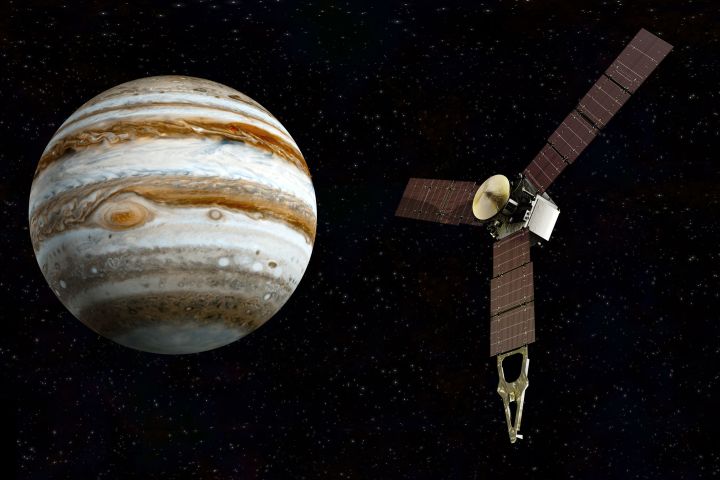
The flyby was significant for two reasons: it was the closest a spacecraft has ever been to Jupiter and it marked the first occasion when Juno had each of its sophisticated instruments monitoring the planet.
“We are getting some intriguing early data returns as we speak,” Scott Bolton, principal investigator of Juno from the Southwest Research Institute in San Antonio, said in a statement. “It will take days for all the science data collected during the flyby to be downlinked and even more to begin to comprehend what Juno and Jupiter are trying to tell us.”

Over the next two weeks, NASA will release a series of visible light images captured the onboard camera “JunoCam,” including what will be the highest resolution images of Jupiter’s atmosphere and our first images of the planet’s north and south poles.
“We are in an orbit nobody has ever been in before, and these images give us a whole new perspective on this gas-giant world,” Bolton added.
Juno was launched on August 5, 2011 and arrived at Jupiter on July 4, 2016. Even before its arrival, the spacecraft began beaming back some breathtaking data, such as the sound of Jupiter’s bow shock and a time-lapse of Jupiter’s four moons orbiting the giant.
This is just the beginning of Juno’s rendezvous with Jupiter, which will last until 2018. During that time, the probe will capture and transmit data about the planet’s magnetic fields, atmosphere, and weather to unlock the story of its origin.


